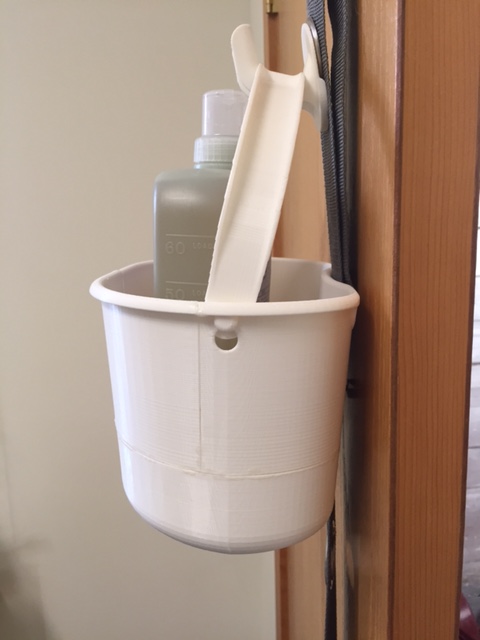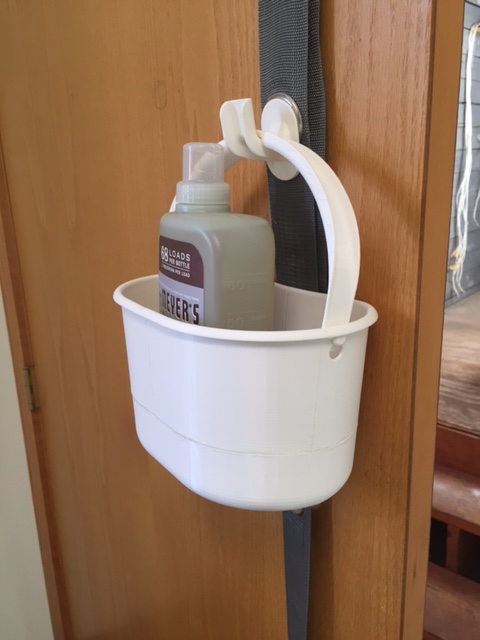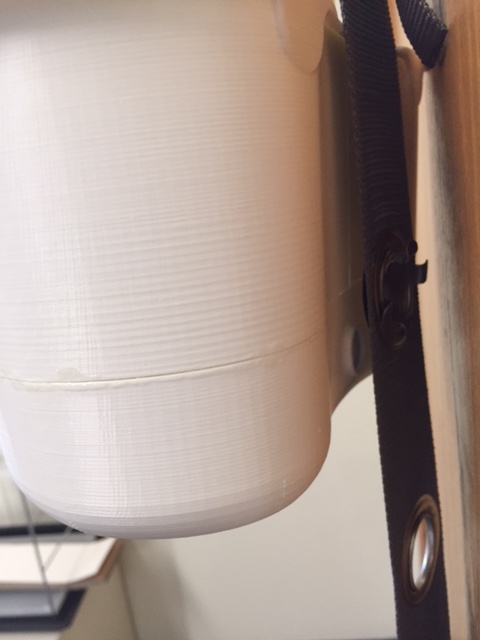Madesmart Hanging Door Caddy
Origin
My colleague, Reem Emerson (a lead product designer at Madesmart) came up with the idea for the hanging door caddy. She wanted the ability to attach two shower caddies to the back of a door.
Challenges
Reem's design was great but she wanted a number of aspects of the design to be improved.
Closing the door caused the caddies to crash noisily into the door.
Moving the door caused the caddies to jerk around in a way that did not inspire confidence.
Loading the caddies with large bottles of shampoo caused them to tilt almost to the point of dumping their contents to the floor.
Doors come in many different heights and thicknesses. How do we adapt to all of these, without marring the door?
We needed to keep the retail under $20 in order to have strong back-to-college appeal.
We need to figure out a way to prototype this product in-house in order to allow us to rapidly iterate the design to perfection.
Solutions
I added a neodymium disk magnet to the back side of the basket, and designed a carbon steel magnetically receptive component that snaps into the 1” ID strap grommets. This kept the basket attached to the strap except during extremely jarring, and in that situation it functioned as a dampener, absorbing most of the energy. The user did not have to be careful with alignment (as would be needed with a mechanical connection). The magnet grips the strap whenever it gets near it.
I changed the cross section of the basket to have a kidney shape. This allowed it to rest against the door at two points, stabilizing it against twisting in the yaw axis.
I strengthened the steel hooks gripping the top and bottom of the door, got rid of the elastic, and inserted a 2” cam buckle into the strap. This provided adjustability and allowed almost all users to produce considerable tension in the strap. This high tension constrained the movement of the basket when the door was slammed.
I sourced the parts for the prototypes, cut and sewed the straps (melting the grommet holes), and attached the grommets. The grommet closing tool cost much more than the entire rest of the prototype, so I designed and 3D printed my own tool from ABS.
My contributions
Collaborated with Reem on the concept.
Prototyping
Final CAD models for all parts
Engineering responsibility on all parts
Worked with Chinese manufacturers to make sure all parts were manufacturable and functioned correctly.
Packaging layout, die line, and case pack layout
Results
Target loved our design, and we were able to hit our $20 retail price point! They picked it up for their 2016 back to college season, and and stocked it in all stores. Target continues to carry the product as of 2019, as does Bed, Bath, and Beyond.
In addition to that, it was an IHA 2017 Global Innovation Award finalist for housewares!





